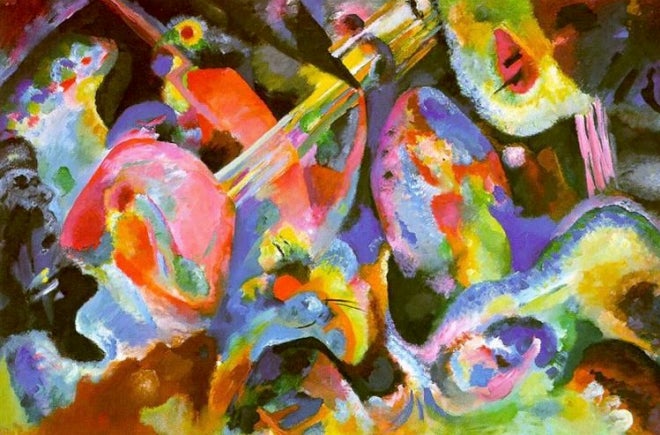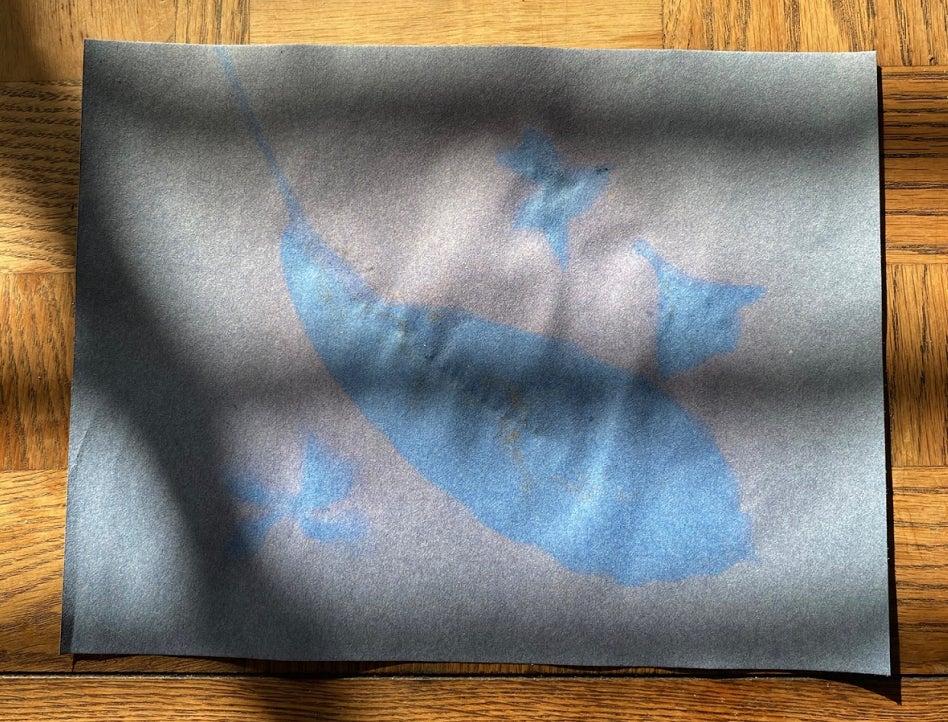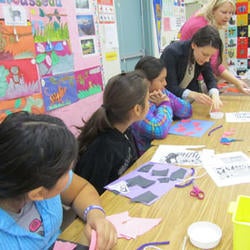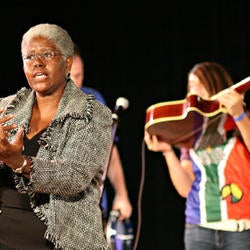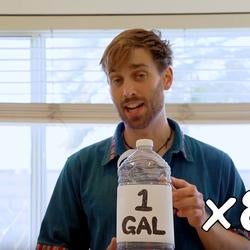Gluck Creative Classroom - Visual Art
Art Appreciation
|
Homage to the Square Gluck Fellow Kellie Flint describes Josef Albers' Homage to the Square with a project using easy to find materials. All ages. Materials needed: variety of square paper, tissue, mylar, and a glue stick. Film by Merideth Hillbrand. |
|
Wassily Kandinsky: Painting With Music - Learn about the paintings of Kandinsky and create paintings that are inspired by music What Is Composition? - A short explanation of Symmetrical, Asymmetrical and Random Composition |
Collage
Collage ActivitiesCollage: A Brief History and How To - A brief history of collage with examples and activity on making a collage A New Art Object - Prompts and instructions for creating a collage Cubist Portrait Collage - Instructions for creating a portrait collage in the Cubist style Dada Clip Art - A collection of Dada Clip art to add to your collage Creating New Art With Photographs - Some examples of Photo collage with definition and questions to ask when making your own photo collage |
Drawing Activities
|
Drawing with Lines and Shapes Apples and Oranges A World of Shapes: Drawing by Learning to See Objects and Places Broken Down Into Simple Forms Contour Drawing Exercise Tactile Self-Portrait A line is a dot that went for a walk" Listen and Draw: Moving to Melody Unlocking Memories through Sketching, Writing, and Reading Picturing Ourselves Express Yourself! Illustrate a Poem Drawing in One Point Perspective Figure Drawing We All Live Extraordinary Lives Willow Plates Achilles' Shield Exquisite Corpse |
Make It Activities
|
Art Popular from Mexico This Digital DIY is made up of three components. The first is a PDF presentation that details the history of arte popular in Mexico. It also describes three specific traditions: candles, lacquer, and alebrijes. The second part is an activity book, which has worksheets that range from reading comprehension to creative prompts like draw your own alebrije. The third and last component is a set of instructions that will show anyone how to create their own alebrije out of paper-mache. Downloads: For The Spanish version of this program in Community Language |
|
Rubber Band Printmaking Life of Pets How To Fold A Sheet-O-Paper Into An 8 Page Zine Braided T-shirt Decorative T-shirt Cutting Fringe T-shirt Fringe T-shirt version 2 Moon Phase Stencil Painting Geometric Masking Tape Designs Sharpie Tie-Dye |
Steam Activities- Arts and Science
|
Sun-Bleached Photograms Students will learn about image making without a camera utilizing a process called contact-printing through photograms. Contact printing is rooted within the history of photography and image making. While learning about the relationships between the historical and present day of the use of images, students will be presented with an alternative way to make a photogram. This process will be safe to do and chemical free with mostly available household items. As with other forms of art, students will be given the opportunity to explore different compositions and forms of arrangement within the boundaries of a sheet of paper. Sun Bleach Photograms Syllabus.pdf |
|
Paper Chromatography The Science of Color Make a Thaumatrope |
Wearable Art
|
Body Extension: An Exploration into Wearable Sculpture |
|
Be Your Thing! - Transforming drawings into sculpture with pipe cleaners Be Your Thing video Download: |
|
Make a mask out of construction paper, bamboo skewers, glue, markers and/or pencils. Instructions and inspiration for creating a wearable piece of art About masks and The work of Lygia Clark's Sensorial Masks |
About the UCR Department of Art
UCR’s Art Department offers a broad spectrum of classes spanning both traditional art disciplines such as painting, drawing, photography, and sculpture, and newer disciplines such as inter-media, and video and digital art, as well as art theory. Art majors develop individual programs of study in consultation with their advisor to match their personal needs and interests, Considerable flexibility in the order in which courses are taken adds to the personalization of studies. Art majors have ample opportunity to perfect their technical abilities, while at the same time developing conceptual skills. They learn how to read and interpret images, and, through analysis of historical movements, they explore and understand their own artistic values and motivations. They gradually move from learning how to use different media into taking a position about their own work.
Among the Art Department’s distinguished faculty are: John M. Divola, M.F.A.; Jim Isermann, M.F.A.; Brandon Lattu, M.F.A.; Charles Long, M.F.A.; Lynne Marsh, M.F.A; Yunhee Min, M.F.A.; Amir Zaki, M.F.A. Faculty members are active professional artists who have gained wide recognition in their fields and for their teaching. Four faculty members have received grants from the National Endowment for the Arts, five have been awarded Guggenheim Fellowships, and all exhibit at international museums and galleries, including the Whitney Museum of Art, Museum of Modern Art, New York, and the Museum of Contemporary Art, Los Angeles. Each year the Department also attracts internationally known visiting artists and scholars who come to UCR to conduct special workshops, seminars, and lectures. Recent presentations have spanned the broad field of art, including sculpture, film, painting, photography, digital art, video, performance, mixed media, installation, curating, and art criticism.
The Art major leads to a Bachelor of Arts degree. The Art Department also offers an approved subject matter preparation program for the Multiple Subject teaching credential. Students who complete such a program are exempt from subject matter examinations when applying for a teaching credential program.
